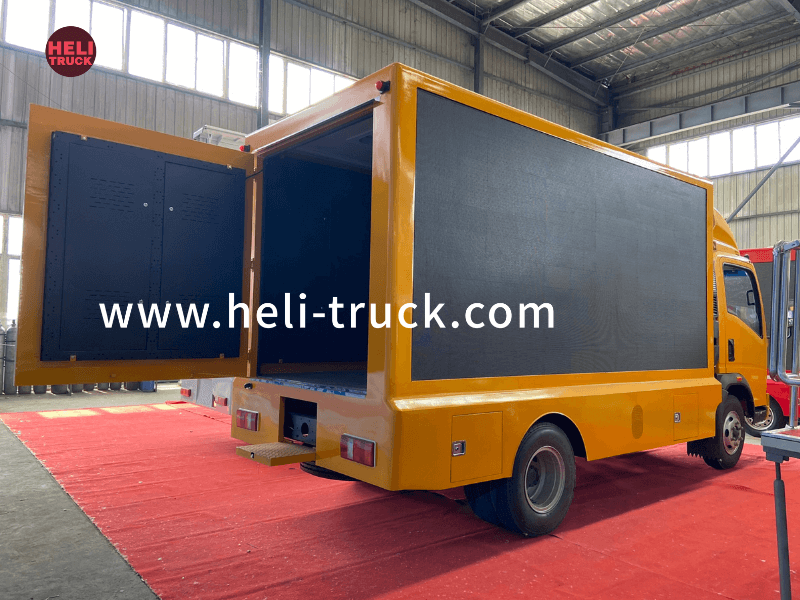Introduction:
Garbage compactor trucks play a crucial role in waste management systems worldwide by efficiently collecting and compacting waste materials for transportation and disposal. These specialized vehicles are equipped with powerful compaction mechanisms that compress the collected waste, allowing for increased capacity and reduced frequency of trips to disposal sites. In recent years, advancements in technology have led to the development of garbage compactor trucks with even higher compaction forces, maximizing efficiency and optimizing waste management operations.
Evolution of Garbage Compactor Trucks:
The history of garbage compactor trucks dates back to the early 20th century when municipalities began using specialized vehicles for waste collection. These early models featured basic compaction mechanisms such as manual or hydraulic presses, which required significant manual labor and were limited in their compaction force. As the demand for more efficient waste management solutions grew, manufacturers started incorporating advanced compaction systems into garbage compactor trucks.
Modern garbage compactor trucks are equipped with powerful compaction mechanisms that utilize hydraulic systems to exert high compaction forces on the collected waste. These systems are capable of compressing various types of waste materials, including household garbage, recyclables, and organic waste, into tightly packed loads. heli truck generated by these trucks not only increases the overall capacity of the vehicle but also reduces the volume of waste, resulting in cost savings and reduced environmental impact.
Key Features of Garbage Compactor Trucks with High Compaction Force:
1. Hydraulic Compaction System: Garbage compactor trucks with high compaction force are equipped with advanced hydraulic systems that provide the necessary power to compress waste materials effectively. These systems utilize hydraulic cylinders and pumps to generate high pressure, allowing for efficient compaction of waste in a short amount of time.
2. High Compaction Ratio: One of the key features of garbage compactor trucks with high compaction force is their ability to achieve a high compaction ratio. This means that the waste materials are compressed into a smaller volume, leading to increased capacity and reduced frequency of trips to disposal sites. The high compaction ratio also results in fewer emissions and reduced fuel consumption, making these trucks more environmentally friendly.
3. Automated Compaction Controls: Many modern garbage compactor trucks feature automated compaction controls that allow operators to adjust the compaction force and cycle times based on the type and volume of waste being collected. These controls help optimize the compaction process, ensuring maximum efficiency and consistent compaction results.
4. Durability and Reliability: Garbage compactor trucks with high compaction force are built to withstand the rigors of daily waste collection operations. These vehicles are constructed using durable materials and components that can withstand heavy loads and frequent use. Additionally, advanced maintenance and monitoring systems are often integrated into these trucks to ensure optimal performance and reliability.
Benefits of Using Garbage Compactor Trucks with High Compaction Force:
1. Increased Efficiency: The high compaction force of these trucks allows for more waste to be collected and transported in each trip, reducing the number of trips required to dispose of waste materials. This leads to increased operational efficiency and cost savings for waste management companies and municipalities.
2. Reduced Environmental Impact: By compacting waste into smaller volumes, garbage compactor trucks with high compaction force help reduce the amount of space required for landfill disposal. This results in less environmental impact and lower carbon emissions associated with waste transportation.
3. Improved Safety: The advanced compaction systems and automated controls found in these trucks help improve safety for operators and workers involved in waste collection operations. By minimizing manual handling of waste materials and optimizing compaction processes, the risk of injuries and accidents is reduced.
4. Enhanced Service Reliability: Garbage compactor trucks with high compaction force offer increased reliability and consistency in waste collection services. The ability to handle larger volumes of waste efficiently ensures that collection schedules are met, and waste is disposed of in a timely manner.
Future Trends and Innovations:
As technology continues to advance, the future of garbage compactor trucks with high compaction force looks promising. Manufacturers are exploring new innovations, such as integrating telematics and IoT (Internet of Things) capabilities into these vehicles to enhance monitoring, maintenance, and performance optimization. Additionally, the use of alternative fuels and electric powertrains is being considered to reduce emissions and improve sustainability in waste management operations.
Conclusion:

Garbage compactor trucks with high compaction force play a vital role in modern waste management systems by maximizing efficiency, capacity, and sustainability. These specialized vehicles are equipped with advanced compaction systems that compress waste materials effectively, leading to cost savings, reduced environmental impact, and improved operational efficiency. As technology continues to evolve, the future of garbage compactor trucks holds exciting possibilities for further innovation and optimization in waste management practices.
